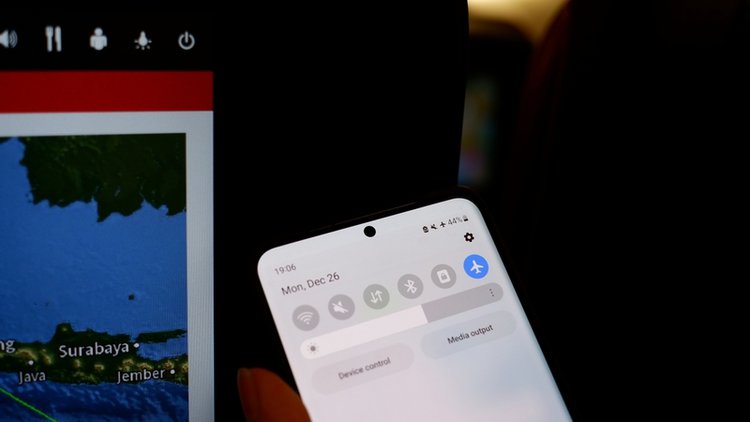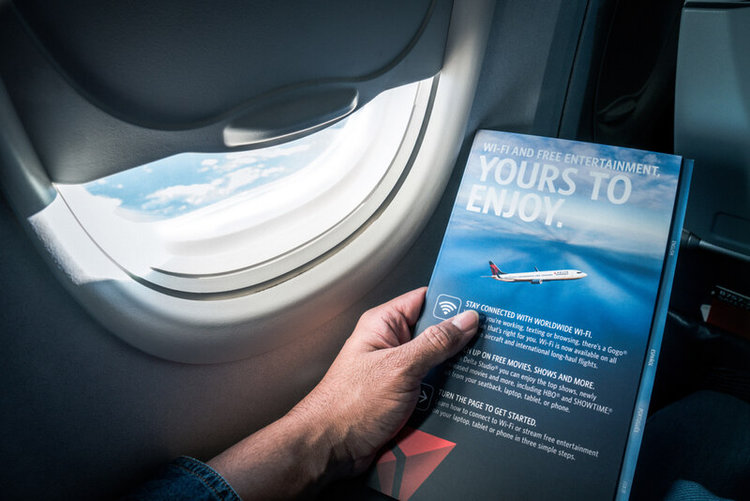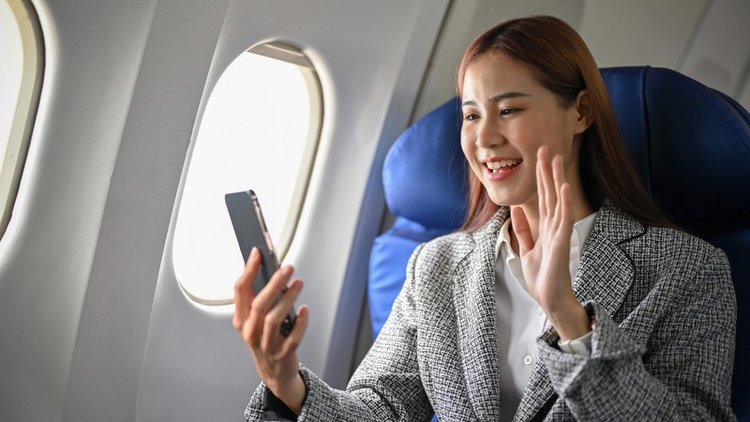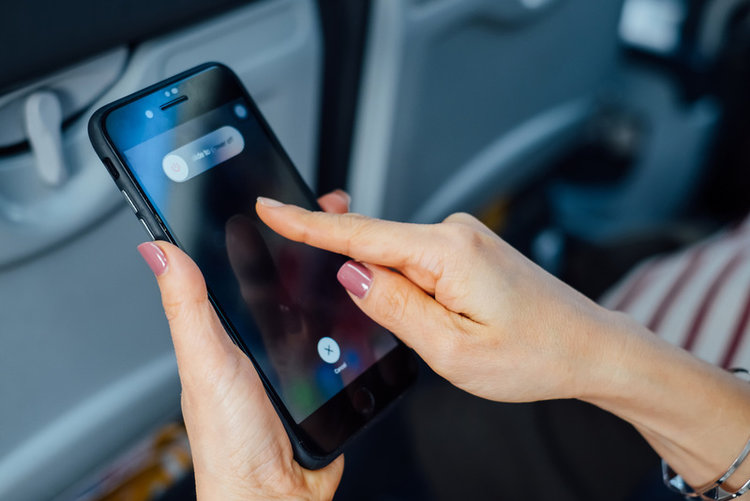How to Use Wi-Fi in Airplane Mode: A to Z of Staying Online at 30,000 Feet
What To Know
- You can use Wi-Fi in Airplane Mode by tapping the Wi-Fi button (if disabled after activating the mode); the mode allows continued use of apps and services without a cellular connection.
- Android 13 or later retains Wi-Fi preferences when Airplane Mode is enabled, whereas on iPhones, disabling Wi-Fi before exiting Airplane Mode ensures it remains off upon subsequent activations.
- To activate Airplane Mode, swipe down for Quick Settings and tap the Airplane icon on Android, or access Control Center or Settings on iPhones to toggle it on.
Understanding your need for continuous connectivity, this article offers a deep dive into the ins and outs of using Wi-Fi in airplane mode.
Discover the seamless integration of Wi-Fi with your device’s flight mode, ensuring you stay online without a hitch.
Quick Navigation
Can I Use Wi-Fi in Airplane Mode?
Yes, you can use Wi-Fi in airplane mode.
Wi-Fi gets disabled once airplane mode is on. Just tap on the Wi-Fi button on your device to enable it without exiting flight mode.
With Wi-Fi enabled, you may continue to use all apps and services that don’t require a cellular network.
Similarly, you can also use Bluetooth function with airplane mode on.
Note: Your phone will not notify you of cellular calls averted due to the active airplane mode. However, SMS (text messages) notifications will pop up once cellular service is restored on the device.
Several cellular service providers could notify you about the missed calls to compensate for the OS-related shortcoming.
Android 13 & iPhone’s Airplane Mode Feature
Since many users like to use Wi-Fi with airplane mode enabled on their phones, Google introduced a feature in Android 13 that doesn’t disable Wi-Fi automatically when airplane mode is enabled.
If you own a Pixel phone running the latest Android, turning on Wi-Fi with flight mode enabled for the first time will pop up a notification stating that keeping the Wi-Fi on will cause it to remain active the next time you turn on airplane mode.
Turn it off manually if you don’t want Wi-Fi to stay on when airplane mode is enabled.
Although the system-level prompt was found on a Pixel, all phones running Android 13 or later should get the functionality.
On iPhones, enabling Wi-Fi or Bluetooth during Airplane Mode will keep these settings ON for the next time you activate Airplane Mode. To change this, simply turn them off before exiting Airplane Mode.
How to Activate Airplane Mode?
Enabling airplane mode is pretty straightforward, irrespective of the device or the operating system. Here are the steps to activate the flight mode feature on a device.
On Android Smartphones
Swipe down on your device’s home screen to access the Quick Settings section. Look for the Airplane button accompanied by a flight icon. Tap on the button to put the device into flight mode.

If the airplane mode toggle is missing in the Quick Settings, head to your device’s Settings page. Tap on Network & internet, and toggle on or off the Airplane mode option.
On iPhones
An iPhone’s airplane mode feature button lies in its Control Center.
On your iPhone home screen, swipe down from the right or up from the bottom, depending on your model, to summon the feature.
Or, head to the device’s Settings section and toggle on Airplane Mode.
Airplane Wi-Fi Services

Several airlines now offer onboard broadband services with the help of satellites and ground-based networks.
The service could be free or paid. Availability is subject to the specific airline, travel route, model aircraft, etc.
Airlines usually inform their flyers about the Wi-Fi facility when buying tickets and confirm the same when boarding the aircraft. Certain airplanes may not have Wi-Fi facilities even if the carrier typically offers the service.
How Does Airplane Wi-Fi Work?
As mentioned above, airplane Wi-Fi employs ground-based or satellite towers to provide Wi-Fi service to its flyers. Some airlines could even implement a hybrid model.
So, how does the ground-based system work?
Land-based tower method was the first technique used to deliver Wi-Fi to planes.
The setup entails towers on the ground, like the ones used to provide Wi-Fi to phones. But instead of projecting the signals toward land, they point them at the sky to airplanes flying above.
The upward traveling signals come in contact with the antenna attached to the airplane’s underbody, turning the aircraft into a Wi-Fi hotspot.
The antenna helps transfer data to the ground. Initially, air carriers used antennae only to send information between the airline’s offices and the flying aircraft. Later, the industry added a few more to accommodate Wi-Fi functionality.
With satellite-based Wi-Fi setups, the antenna is positioned atop the plane to link correctly with the satellites orbiting in the sky. Satellite-powered Wi-Fi uses a different frequency and offers faster service.
Unlike ground-based systems, the satellite setup works even when the airplane floats over oceans, seas, and other water bodies.
Aircraft that employs a hybrid Wi-Fi system automatically switch between satellite and ground-based setups when flying over water bodies and land masses.
Use Airplane Wi-Fi for Calls in Moderation
The provision enables passengers to make VoIP (Voice over Internet Protocol) or video calls to friends or clients during flight.

However, carriers hope passengers use the Wi-Fi calling facility in moderation or only when needed. Calling a friend or family member to bide time or talking for several minutes or hours will be deemed inappropriate.
One can imagine the plight of cabin attendants waiting to serve passengers who are busy on a phone call. Service will get delayed, and safety announcements could skip people engaged in their phones.
One of those sets of safe flying guidelines includes the prompt to put phones in airplane mode. It needs to be said because a significant chunk of flyers forget.
Not to mention, people conducting all their VoIP calls on speakerphone could disturb fellow passengers and disrupt the cabin environment altogether.
Why Activate Airplane Mode During Flight?

Wireless communication and aviation navigation depend on radio services. The digital tech in use currently is much more advanced than the analog technologies used a few decades ago.
According to research, personal electronics can emit signals that fall in the same frequency as an airplane’s navigation and communications systems. The collision is called “electromagnetic interference (EMI).”
The strange buzzing sound that goes off if a smartphone is near a speaker is due to EMI. The interference is much greater during landings and take-offs, and putting a phone on airplane mode during those two phases is critical.
Contrary to general assumptions, mobile phones and other wireless devices primarily interfere with or overload ground networks as they try to connect to multiple towers simultaneously. They do not pose a significant threat to an aircraft’s built-in systems.
Between take-offs and landings, phones or other electronic devices interfering with aircraft signals is not a major concern.
However, cell phones or devices intentionally emitting electromagnetic signals must stay non-usable throughout the flight.
Airplane Mode Benefits
Airplane mode not only helps air carriers, but the feature is also beneficial in a few other ways.
Improved Battery Life
Airplane mode helps save battery since it cuts off the radio signal from and to your device. It pauses phone calls, texts, emails, etc., lightening the device’s workload and conserving battery.
The reduced background activity combined with the zero requirements to maintain a connection or look for a signal constantly preserves the battery.
Not to mention, cutting off the above phone functions translates to a decreased need to use the device, reducing time using the device or powering on its display. The lessened screen time translates to improved battery life.
If you enable Wi-Fi and Bluetooth alone in airplane mode, there could be a marginal drop in battery gains. But the device’s endurance will still be better than in normal mode.
Also, your device will charge faster if plugged into a power source with the airplane mode feature on.
Reduced Radiation Emission
Airplane mode prevents your device from emitting radiation. Even though phones do not give out electromagnetic radiation above permissible levels, some devices could output more radiofrequency energy than other models.
Because RF energy could pose health concerns, limiting exposure to radiation as much as and whenever possible, even when a device’s radiation levels are under the safe limit set by the FCC, is highly advised.
Provides Freedom
If your device’s continual email and message notifications nag you, airplane mode is a solution. The absence of distracting pop-ups and noises gives you the mental space to focus on work.
You need not enable airplane mode throughout the day as you’d not want to miss specific calls. You can, however, choose phases during the day.
If a piece of work is critical and urgent and warrants your undivided attention, put your device in airplane mode while you get it done. If you want to spend quality time with your kids, spouse, parents, friends, etc., airplane mode will help you focus only on them.
FAQs
Why Are Flight Passengers Instructed to Turn Off Their Phones?

Flyers are asked to switch off their phones or other electronics because the risk of interference with a plane’s systems is significant when a phone’s cellular radio is on.
Turning off the device is needed, especially during take-off and landing so as to minimize distractions or err on the side of caution.
Can Electromagnetic Interference Cause a Plane Crash?
Although theory suggests electronic interference could cause an airplane to crash, no real-world incidents have been documented.
It’s, therefore, safe to assume no such accidents will ever happen. If not the direct or sole cause, cell phone signals could contribute to a major flight mishap, however.
With airplanes getting more sophisticated and technologically advanced and the increasing reliance on automation, aircrafts are only getting slightly more vulnerable to the possibility with time.
Conclusion
Despite knowing cell phones are not meant to be used inside an airplane, not everyone’s on board (ignore the pun).
It clearly shows how indispensable cell phones are to humans. But to avert major threats and in the interest of everybody flying, putting the cell phone to deep slumber is imperative.
If you’ve used your cell phone on an airplane when you were not supposed to, this information hopefully convinced you not to repeat it.
If that sounds like intruding on personal freedom, imagine some random guy on a flight talking aloud on the phone or yelling at some guy on the other side.
Catherine Tramell has been covering technology as a freelance writer for over a decade. She has been writing for Pointer Clicker for over a year, further expanding her expertise as a tech columnist. Catherine likes spending time with her family and friends and her pastimes are reading books and news articles.


